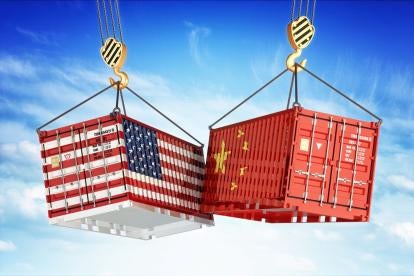The year 2021 will likely be a year of geopolitical reckoning between the United States and the People’s Republic of China, which will inevitably have direct and indirect flow-down effects into US supply chains. While the Biden Administration has not yet unveiled many specifics as to what its approach to China will be, on January 12, 2021, the Trump Administration’s Department of Homeland Security (“DHS”) released its “Strategic Action Plan to Counter the Threat Posed by the People’s Republic of China” (the “Action Plan”), indicating what its viewpoint has been. The report details efforts by DHS to combat purported threats rising from the People’s Republic of China (“PRC”), as well as strategies to address key potential vulnerabilities (whether or not actually implemented). The Action Plan addresses Border Security, Economic Security, Cybersecurity, and Maritime Security.
Summary 
The Action Plan focuses heavily on Border Security and Immigration issues and praised the work of various federal agencies in screening and vetting foreign individuals, even in the face of resistance from the Chinese Communist Party (“CCP”). The plan lists actions taken by the Trump Administration that were aimed at improving the efficacy of border security, suggesting that PRC citizens should face additional scrutiny in obtaining visas or be subjected to targeted programs such as Presidential Proclamation 10043, which led to the revocation of the visas of more than 1,000 Chinese students in the summer of 2020.
In addressing Trade and Economic Security, the report draws significant attention to intellectual property and supply chain security. The Action Plan emphasizes the vulnerabilities in our economic dependency on China. Perhaps recognizing that the Trump Administration made little actual policy in this area, the DHS suggests that it plans to draft multiple policy papers with recommendations for proactive measures, while working to advance public awareness and engagement.
FEMA and CISA are the core of the DHS Cybersecurity and Critical Infrastructure strategy. The Action Plan calls for broad cooperation between DHS components, state and local agencies, and industry partners to fortify vital infrastructure and plan exercises to ensure readiness for potential attacks.
Finally, the Action Plan addresses Maritime Security, highlighting the role of DHS and the United States Coast Guard (“USCG”). According to the DHS, USCG should have a larger role in international relations, including nurturing relationships with countries like the Philippines, while also taking a larger role in international bodies like the Arctic Council.
Analysis
Despite being presented as a strategy for future conduct, the Action Plan contains few specific policy recommendations and leaves the Biden Administration considerable space to forge ahead with its own agenda. Indeed, it is likely that the Biden Administration will deemphasize purported immigration controls and instead seek to focus or “right-size” the US’s economic relationship vis-à-vis the PRC.
This is no small task. It is easy to say that US companies should be “reshoring” or moving manufacturing back home. Implementation, however, is much more difficult. Our complacency with the US-China economic relationship over the past several decades now means that there are numerous critical components and products (often in the high-tech area) made exclusively in China – and changing this fact will require major industry and perhaps governmental investment. Collaboration in this area of course presents its own challenges – from an antitrust perspective in the case of private industry collaboration, and from a WTO perspective in the case of government subsidies. Tariffs have often proven to be too blunt a tool, with negative unintended consequences on US companies. And while sanctions on bad actors are often effective, with only a few exceptions, we have barely begun to determine what actors in China we consider to be “bad,” and what we intend to do about it.
One uncomfortable truth for US policymakers – and for US companies when they experience the flow-down effects of any policy decisions that are made with regard to China – is that China did not create the balance of trade and intellectual property rights issues that it has with the United States without the US’s considerable cooperation. Another uncomfortable truth is that the world is too interconnected for us to simply flip a switch and regard China as our enemy. Any recessionary effects China feels as a result of US policy inevitably will be felt in the US as well. Thus, while China has never been aggressive militarily, the leverage China holds more closely resembles the bomb strapped to its own chest.
Furthermore, any alienation China experiences as a result of US punitive measures will inevitably impact our effectiveness at enlisting China’s help on US policy initiatives that require global cooperation (most notably, but not exclusively, climate change and the environment). Finally, while China presents outwardly as able to easily maneuver its enormous economy and population, the reality is by no means effortless, as China struggles to create major economic and social change, without any accompanying political change. This may work in economic good times; but such a strategy has no successful precedent once a society becomes economically uncomfortable. China’s grasp on its controls is therefore more tenuous than it seems.
This is where the “solution” paragraph should end this essay. But there isn’t one. The US’s approach going forward with China will not and cannot be a simple approach. Rather, it should and hopefully will be a carefully calibrated balancing, industry specific and guided by experienced policymakers who are China experts – no small feat, given this Foreign Policy’s grave observation of the decreasing number of China experts in the west. This is a call, therefore, for new type of collaboration in the United States – between supply chain and manufacturing experts and China policymakers. Any policy that goes forward where one perspective is heeded and the other is not will be incomplete and likely incorrect.
The opinions expressed are those of the author(s) and do not necessarily reflect the views of the Firm, its clients, or any of its or their respective affiliates. This article is for general information purposes and is not intended to be and should not be taken as legal advice.
Coauthored by Daniel Lonergan




 i
i


